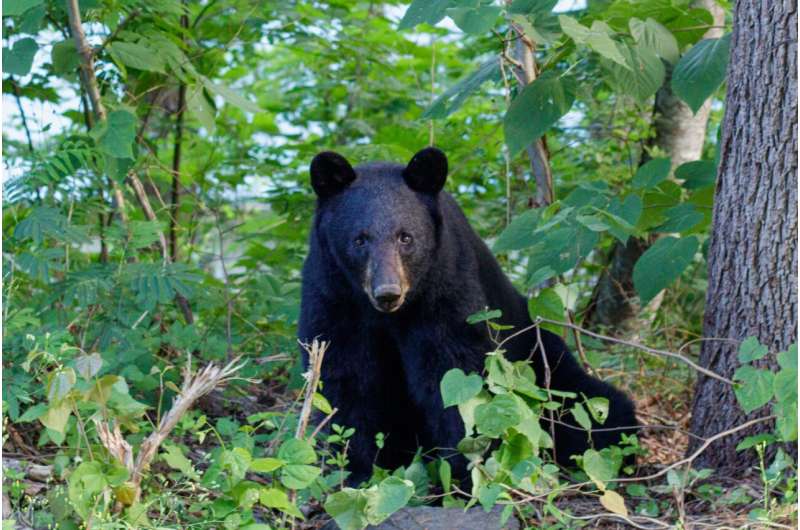Suddenly encountering a bear while walking in a forest would imprint both the bear and the location in the walker’s memory. RIKEN researchers have discovered how this information is integrated into pre-existing mental maps in rats. Credit: Unsplash/CC0 Public Domain
Floe Foxon, a data scientist with Pinney Associates, has been comparing the number of bears living in parts of North America with the number of Bigfoot sightings over the years and suggests there is a correlation. In a paper posted on the preprint site bioRxiv, Foxon built on prior research comparing Bigfoot sightings with bear sightings in the Pacific Northwest, to include all of the continental U.S. and Canada.
Sightings of Bigfoot—also known as Sasquatch, a large, hairy creature resembling a human being—have been reported for years. Many groups of scientists have conducted studies to find out if such creatures really do exist. To date, all such studies, which have included DNA analysis of fur and feces found in the wilderness, have failed to find any evidence of such creatures. But reports of sightings continue.
One possible explanation for Bigfoot sightings, some have suggested, is people mistaking some other creature for a Bigfoot. In such cases, the likely culprit would be the black bear. Such bears are similar in size to people and on occasion have been observed behaving and moving in ways similar to humans—standing or walking on hind legs, for example.
Several prior studies have looked at the number of Bigfoot sightings in parts of the Pacific Northwest, which is where most Bigfoot sightings occur, compared to bear populations, and found what they describe as correlations. In this new effort, Foxon built on such research by expanding the study field to include all of the continental United States and Canada.
The work involved breaking down both countries into states or provinces, factoring in things like human population, forest cover and the presence of other wildlife. Next, areas of bear density populations were charted onto a map, followed by published reports of Bigfoot sightings.
Foxon found many more instances of Bigfoot sightings in the clusters where bears were known to live, compared to places where there were few or no bears. The evidence strongly suggests that most if not all Bigfoot sightings are actually people catching a glimpse of a wild black bear in action.
More information: Floe Foxon, If it's there, could it be a bear?, bioRxiv (2023). DOI: 10.1101/2023.01.14.524058
© 2023 Science X Network






















